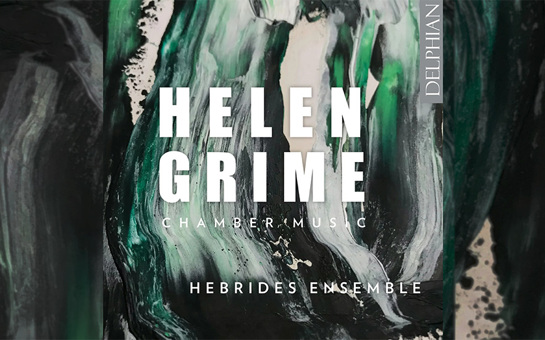- Helen Grime
To see the summer sky (2009)
- Chester Music Ltd (World)
Commissioned for a Philharmonia Music of Today portrait concert
Programme Note
To see the summer sky for Violin and Viola falls into four movements. The first movement opens with the two instruments sounding almost as one playing very high, glassy harmonics. Gradually, an expressive viola solo emerges, with both instruments descending to their lower ranges. A livelier quasi scherzando solo for violin accompanied by viola pedal notes leads to a chorale like passage, the violin at the top of its range, whilst the viola is at its lowest. The movement ends with the two instruments coming together once again on a unison Bb and fades away almost as it has begun, but this time in the husky lower registers.
The second movement is much faster and opens with a downward flurry for both instruments. A continuous pizzicato line for viola is interrupted by more violent passages in the violin. The two instruments come together in a dance-like passage before the roles are reversed. Finally an ecstatic melody surfaces in the viola and is later continued in the violin before the movement closes with the spiky figures of its opening, the two instruments ending in unison.
The third movement encompasses is the most delicate and still music of the piece. After a very tranquil opening, an expressive violin melody is accompanied by a gentle rocking figure in the viola. Tentative at first, intensity and speed gather until the violin reaches stratospheric heights. Both of the instruments play at the extremes of their registers before moving to common ground for a more lively textural passage. This is followed by a passionate reminder of the movement’s opening, gradually fading away to nothing.
The piece ends with a Moto Perpetuo. The instruments begin by dovetailing a single line which develops into two strands before a more violent section appears, punctuated by strident double stops. Both instruments have slightly manic solo episodes before the movement quickly dies away in the single line of its opening.
The second movement is much faster and opens with a downward flurry for both instruments. A continuous pizzicato line for viola is interrupted by more violent passages in the violin. The two instruments come together in a dance-like passage before the roles are reversed. Finally an ecstatic melody surfaces in the viola and is later continued in the violin before the movement closes with the spiky figures of its opening, the two instruments ending in unison.
The third movement encompasses is the most delicate and still music of the piece. After a very tranquil opening, an expressive violin melody is accompanied by a gentle rocking figure in the viola. Tentative at first, intensity and speed gather until the violin reaches stratospheric heights. Both of the instruments play at the extremes of their registers before moving to common ground for a more lively textural passage. This is followed by a passionate reminder of the movement’s opening, gradually fading away to nothing.
The piece ends with a Moto Perpetuo. The instruments begin by dovetailing a single line which develops into two strands before a more violent section appears, punctuated by strident double stops. Both instruments have slightly manic solo episodes before the movement quickly dies away in the single line of its opening.
Scores
Sample Pages
Reviews
Discography
More Info

- New Album of Chamber Music by Helen Grime
- 22nd August 2025
- A new album of chamber music by Scottish composer Helen Grime featuring the acclaimed Hebrides Ensemble is available now from Delphian Records.

 Located in the UK
Located in the UK
 Located in the USA
Located in the USA
 Located in Europe
Located in Europe